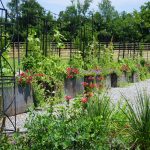
Enjoying art outdoors provides a special link between nature and art. Many gardens and parks feature sculpture enclaves that help people appreciate both elements even further.
Selecting the perfect garden sculpture requires finding pieces with contrast and balance in mind. To find one, try visiting sculpture parks either online or physically; salvage yards offer items which can be modified artistically; boot sales offer fantastic bargains; while house contents sales and boot sales provide invaluable finds.
Commissioning Sculptures and Murals
Sculpture gardens showcase artworks in natural settings. Typically featuring meandering footpaths and an array of plants and wildlife to encourage discovery, artists also employ various materials and shapes in creating works that capture movement as well as multiple perspectives.
Nath Sculpture Garden at Houston Museum of Fine Arts features an artistic landscape created with timber bamboo and Asian jasmine plants, stone Shona sculptures from New Mexico artists as well as artwork by contemporary New Mexico artists that highlight humankind’s relationship with nature and tell historical and cultural tales specific to New Mexico and beyond.
Nearly every major art museum features a sculpture garden as an outdoor gallery for changing exhibitions, with the best ones taking advantage of their outdoor setting and projecting a different vibe depending on the season or time of year.
Adding Plants and Trees
Every actor requires supporting cast, and every landscape sculpture needs an appropriate backdrop to show its form. Some pieces thrive when displayed against natural settings that emphasize subtle lines and minimal colors; other sculptures excel when displayed within gardens where colors and sculptural plantings complement one another for optimal effects.
A sculptural garden can also feature living art installations like the beehive-like structure that French artist Pierre Huyghe incorporated into his sculpture Untilled (Liegender Frauenakt) [Reclining Female Nude] (2012) to house Italian honeybees. Such installations create visual contrast, adding interest to the landscape by providing textures and forms which may otherwise remain undetected from distance.
Other functional art pieces, like trellises adorned with vines, provide both aesthetic value and practical guidance for visitors through a space. Trees provide instant shade that creates an ideal microclimate that fosters plant life growth in an area.
Host Art Exhibitions and Events
sculpture gardens make an excellent location for hosting art exhibitions and events, offering plenty of room to roam unhindered by four walls.
Kroller-Muller Museum’s sculpture garden provides an ideal environment to display modern art sculptures, with seasonal changes creating a different feeling each time someone visits.
Minneapolis Sculpture Garden was renovated in 2017. Its landscape features a meadow that filter stormwater back to its source; wildlife and plants thrive here thanks to engineered soils.
Maintenance of a sculpture park requires a multidisciplinary team, including architects, designers, artists, engineers, gardeners, ecologists and writers. By engaging these disciplines together to protect both landscape and art alike over the long run, this approach creates sustainable outdoor spaces which attract visitors from across the world.
Creating a Sense of Community
Gardens and parks dedicated to sculpture offer more than a respite from everyday stress; they can also foster cultural enrichment and recognize local heritage, while encouraging interactions and dialogue – they become gathering spots where communities come together and form bonds of solidarity.
Sculpture gardens have a rich history across the globe, dating back 175,000 years to human constructions found at Bruniquel Cave in France – such as rings-like structures of stalagmites arranged into rings. Today, this art form continues to thrive through many channels.
Edward James of Mexico created a surrealist Xanadu garden; Niki de Saint Phalle added vibrant nanas in Tuscany; Antoni Gaudi created Park Guell of Barcelona; each garden reflects its creator’s individual vision while challenging assumptions of what art should look like. Botanical elements combined with living sculpture add another dimension, creating multifaceted and visually captivating outdoor art spaces for all to appreciate.







